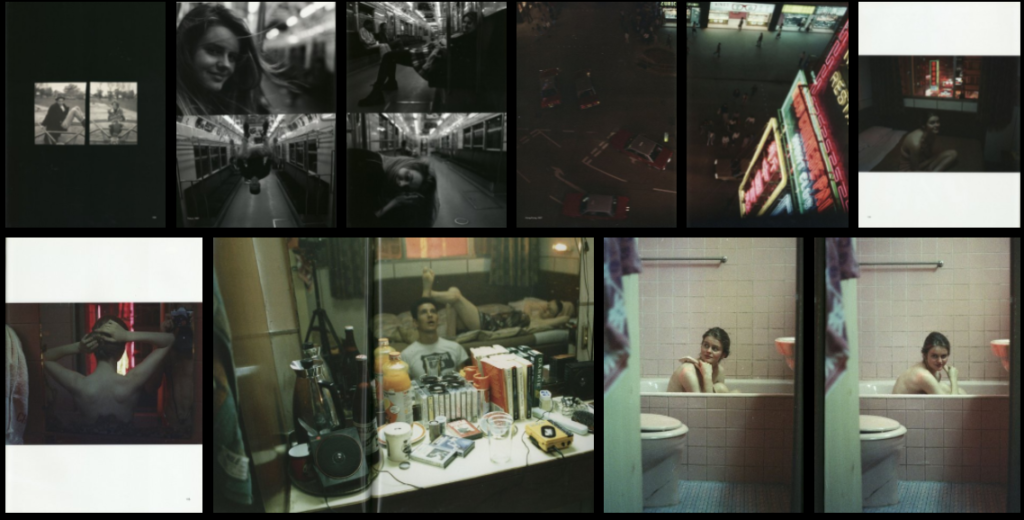CORINNE DAY

This image is of one of Day’s friends showing the aftermath of a fight, the image itself was taken with flash and is quite overexposed on the subject’s face, with the background much darker showing the image was taken at night.
Corinne Day, before her commercialised clean-cut style of photography, created images in an autobiographical sense- showing adolescence in a brutally honest and open sense.
Her style of ‘dirty realism’ was to become enormously influential within mainstream advertising. But where the imagery of nonchalant, nonconformist youth was for Day an extension of her life, in fashion the ‘look’ returned as pure, empty style

FRANCESCA WOODMAN

This image was taken with a slow shutter speed in order to enhance motion blurs, the image was probably taken on a timer as Woodman herself was often the main subject of her images, the image was also taken in natural lighting.
A common theme in Francesca Woodman’s work is fragmenting her body by hiding behind furniture, using reflective surfaces such as mirrors to conceal herself, or by simply cropping the image, she dissects the human figure emphasising isolated body parts.
In her photographs Woodman reveals the body simultaneously as insistently there, yet somehow absent. This game of presence and absence argues for a kind of work that values disappearance as its very condition.
This style of photography portrays representations of the female body, many photographers who have been inspired by Woodman often look at sexuality, gender roles and stereotypes.

RYAN MCGINLEY

This set of images were all taken in artificial light, some with flash and feature may different subjects. The polaroid way that the images are presented show a personal look towards the images, as it looks like a collection of memories with friends.
Early photographs by McGinley, whose pioneering, documentary-style approach captured the antics and daily activities of himself, his friends, and collaborators in lower Manhattan in the late 1990s.
The unmistakable marks of McGinley’s early work featured chromatic portraits of friends and lovers, with an energetic, spontaneous, and intimate—rather than objectifying—fixation on the human body.

